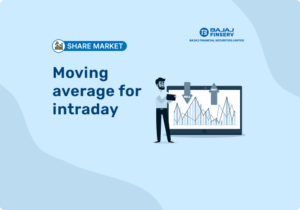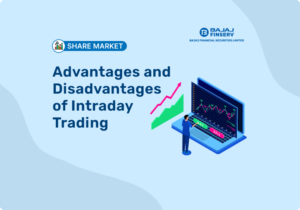How Gains from Intraday Trading are Taxed?
Last Updated on November 7, 2023 by BFSLTeam BFSLTeam

Imagine standing at the edge of a cliff overlooking the vast ocean of the stock market. The wind is blowing in your hair, the sun is shining bright, and you’re ready to take the leap. You’re about to embark on a journey of intraday trading, where every second counts, and every move can bring you closer to your financial goals or leave you far behind.
As you jump into the market, you start to make quick gains, buying and selling shares at lightning speed. But as you become more successful, you realize that there’s one thing you still need to consider: taxes. How will the government treat your gains? Will you be able to keep all of your hard-earned money, or will you have to give a large portion of it away? You start to feel a knot forming in your stomach as you realize that you don’t have all the answers.
Don’t worry, you’re not alone. Many traders have faced the same questions, but with the right knowledge, you can navigate the tax laws and minimize your tax liability, maximizing your profits and achieving your goals.
When you earn money by participating in intraday trading, your income will be treated as business income. Therefore, just like business income attracts tax, income from intraday trading will also attract tax. Your annual tax will include your profits from intraday trading, salary, deposits, etc. Profits from intraday trading are added to taxable business income and are taxed in accordance with the total income slab, as stated in section 43(5) of the Income Tax Act.
Keep reading this blog to learn more about intraday trading tax!
Table of Content [hide]
Long-term Investments and Capital Gains Tax
Investment and capital gains walk hand-in-hand. However, the period of holding the stock defines whether it’s a long-term or a short-term capital gain. If you hold the stock for more than a year, it’s a long-term capital gain, whereas holding the stock for less than a year is a short-term capital gain. You attract a 10% tax on your long-term capital gain if the sale of equity shares is over Rs. 1 lakh. Short-term capital gains attract a 15% tax if securities transaction tax is also applicable.
Intraday Trading Tax
Let’s take a look at income tax slab rates under old and new tax slabs:
1. New Tax Slab
| Tax Bracket | Tax Charges |
| Rs. 5 lakhs and Rs. 7.5 Lakhs | 10% |
| Rs. 7.5 lakhs and Rs. 10 lakhs | 15% |
| Rs. 10 lakhs to Rs. 12.5 lakhs | 20% |
| Rs. 12.5 lakhs to Rs. 15 lakhs | 25% |
| Above Rs. 15 lakhs | 30% |
Note: This is applicable to Senior Citizens too.
2. Old Tax Slab
| Tax Bracket | Tax Charges |
| Up to Rs. 2.5 lakhs | Nil |
| Rs. 2.5 lakhs to Rs. 5 lakhs | 5% |
| Rs. 5 lakhs to Rs. 10 lakhs | 20% |
| Above Rs. 10 lakhs | 30% |
Note: Under the old tax slab, for senior citizens, taxation was nil for a tax bracket of up to Rs 3 lakh. Everything else remained the same.
Illustration of Intraday Trading Tax Liability
We have looked at the tables and numbers, but how does it apply to you? Don’t worry! We’ll explain. Let’s assume Person A has a salary of Rs 10 lakh annually, with a short-term capital gain from equity shares amounting to Rs 1 lakh. Moreover, he gains Rs. 2 lakhs from intraday trading with additional gains of Rs 2 lakh from his derivatives trading. Finally, he also gains an interest rate from bank deposits of Rs 1 lakh.
This brings Person A’s total income to Rs 15 lakh without adding capital gains to his total income since it has a fixed rate of taxation. Therefore, his tax liability is Rs 2.625 lakh + STCG of Rs 15,000, equaling Rs 2.775 lakh.
What are the Charges for Intraday Trading?
This depends on the broker or the online trading website you are using. Usually, the brokerage charges on equity delivery are Rs. 0 and charges Per Order For Intraday, F&O, Currencies, and Commodities range between Rs. 20 to Rs. 30 online.
What is the Average Price?
The average cost develops when you trade in the same security many times. The cost is what you use to calculate the total average price of the Purchase and Selling of a particular share multiple times. For example, you purchase a share of Rs. 200 from ‘XYZ’ Company. You sold the share for Rs. 220. You quickly make a profit of Rs. 20. Then you buy the same share for Rs. 240 and sell it for Rs. 260. You now make a profit of Rs. 20.
Let’s calculate the Average Buy Price and Sell Price:
| Average Buy Price Rs. 200 + Rs. 240 = Rs. 440 Rs. 440/2= Rs. 220 Average Sell Price Rs. 220 + Rs. 260 = Rs. 480 Rs. 480/2 = Rs. 240 Profit 240-220= Rs. 20 20*2= Rs. 40 Rs. 40 will be notified under Realized P/L on your dashboard. |
What Happens to Speculative Business Loss?
We have talked about gaining profits from Intraday trading, but what if one has encountered speculative business losses? Well, if you have lost money when trading intraday, you can carry those losses over for the following four fiscal years. This will help you in lowering your taxable income in the future. However, remember that if you want to avail of the benefit to carry forward losses, you have to file your income tax return by the deadline.
Conclusion
Intraday trading is a great way to earn money. However, remember that you need to be cautious before investing your hard-earned money in the market. Read all the information and related documents carefully before investing. Bajaj Securities offers great subscription plans at low brokerage fees for intraday trading! Join today!
Frequently Asked Questions
The earning is classified as speculative income when profit is made from the intraday trading of equity shares.
Capital assets are anything that belongs to you for your personal use. Trading assets refer to securities a company holds for selling and making a profit.
LTCG (Long-term Capital Gains) and STCG (Short-term Capital Gains) are capital gains applied when assets are sold and incur profit. STCG is taxed at a 15% rate when stocks are bought and sold before a year. LTCS comes into play when a stock is held for more than a year, attracting a tax rate of 10%.

